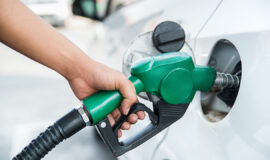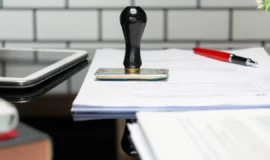
As summer intensifies, much of Pakistan is sweltering under temperatures above 45°C, with certain regions even reaching a blistering 49°C. Heat stress is the leading cause of weather-related deaths – World Health Organization. So heatwave should not be taken for granted as last year in June, it killed over 500 people in Pakistan within just 6 days. Not only this, Extreme temperatures kill 5 million people a year globally with heat-related deaths rising, study finds – TheGuardian.
Heatwave is not just very hot weather; it is very hot weather coupled with high humidity (depending upon where you live) for an extended period. It can cause heatstroke, which is a medical emergency with a high fatality rate, so it should be taken seriously. Heatstroke can aggravate different underlying illnesses, including
- Cardiovascular disease
- Diabetes
- Mental health
- Asthma
It can also increase the risk of accidents and transmission of some infectious diseases. You must also be feeling the heat, right? That’s why I’m here to show tips to survive the heatwave in Pakistan and stay cool, as well as how to identify if someone has been affected by heatstroke and what to do in this situation.

What is Heatwave?
A heatwave is a period when the heat is higher than normal for several days and even nights. Humidity can make the situation worse, as with more humidity, temperature can feel higher than it actually is. These types of days are increasing in frequency, duration, magnitude, and intensity due to climate change, and Pakistan is a country affected pretty badly due to climate change.
Causes of Heatwave
There can be multiple causes of a heatwave.
Now that you know what a heat wave is, you need to know what causes it. So briefly, heatwaves are caused by:
- High Pressure at Ground Level: Accumulated over a region, high pressure moves the air towards the Earth’s surface. This compression makes it difficult for air to move from one region to another, and sometimes, it can take days and even weeks, resulting in excessive heat accumulation in the area.
- Global Warming: Excessive emission of greenhouse gases due to human activities such as burning fossil fuels, industrial activities, deforestation, and more. As a result, more heat is accumulating in the Earth’s atmosphere over time.
- Drought and Dry Conditions: Prolonged dry environments and periods of drought can cause the land to dry, which heats up quicker than normal.
- Changes in Climate: Some natural variations in the climate El Nino and La Nina events, can also affect the weather, increasing the possibility of a heatwave in certain regions. For example, during El Nino events, ocean water becomes warmer in the tropical Pacific region, which can cause alterations in the atmospheric circulation and heatwave in some areas.
Heatstroke: Symptoms and Treatment

Exposure to a heatwave can result in many medical complications, with heatstroke being the most common.
What is heatstroke?
Simply put, when the body overheats and its temperature rises to 104F or higher. But does the human body reach this temperature during the winters too? In that case, it won’t be considered heatstroke. Heatstroke happens during the summer months only when the body is exposed to high temperatures over a long period of time.
Heatstroke must be taken seriously as it can damage the following vital organs if left untreated:
- Heart
- Brain
- Kidneys
- Muscles
Symptoms
If you suspect heatstroke, look for the following symptoms:
- Feel faint
- Dizzy or nauseous
- Stop sweating
- Lose consciousness
- High body temperature
- Unusual behavior – Confusion, irritability, seizures, slurred speech
- Headache
- Racing heart rate
- Rapid breathing
- Flushed skin
Treatment
Prevention is better than the cure, but once it happens:
- Call 1122 or a medical emergency to seek professional medical assistance
- In the meantime, get the person indoors or under shade
- Cool down the person
- Loosen or remove any unnecessary clothing
- Move the person to a shady or air-conditioned location immediately
- Apply cold, wet cloths or towels to the body
- Use ice packs and fans if available
- Immerse in a cold-water bath if possible and safe
- Leave the rest for the professionals
Prevention
The good thing is, heatstroke is preventable. Elderly people and kids are at higher risk, along with pregnant women. So, it’s important to learn how to prevent heatstroke for them specifically, and all others generally. The following steps should help you prevent it. These tips are equally effective to help you stay cool inside your house:
- Clothing must be lightweight and loose-fitted
- Protect against sunburn
- Drink plenty of water (or other suitable fluid) to stay hydrated
- Avoid going outside, but if you have to, wear a wide-brimmed hat and sunglasses
- Take cool showers
- Avoid leaving anyone in a parked car
- If you’re on medication, be extra careful. It is better to not leave the house during the day
These are some tips on how to avoid heat stroke and what to do if someone is suffering from it. Now, i will show you how to stay cool inside and how to keep your home insulated from heat during intense summer months.
Keep Your Home Cool During Intense Summer Heat

Staying inside is preferred, but during the long, scorching summer months, homes can easily turn into ovens. So, it’s important to keep the temperature down at home to nullify the effects of the heatwave inside your home.
The following tips should help you bring the heat down to bearable levels:
- Close blinds and curtains, and if feasible, buy curtains and blinds in white color.
- At night, the air is cooler compared to the day. Cool down your home by opening a window at night when the temperature is lower outside, and close the window during the day when the temperature is higher outside.
- Keep the lights and electronic appliances off when not in use, as they tend to generate heat.
- Use electric fans when temperatures are below 40 ˚C / 104 ˚F. In temperatures above 40 ˚C / 104 ˚F, fans tend to heat the body.
- In addition to keeping doors and windows closed and locked, make sure there aren’t any gaps. This is to prevent cool air from escaping.
- In addition to not running the appliances during the day because they generate heat, make sure not to use clothes and dishwashers, and dryers. However, if you need to, go for the shortest wash cycle and dry clothes outside.
- If you can afford it, turn on the air conditioner or air cooler.
- Make sure to clean your AC filter every two weeks. Your AC will run smoothly and consume less energy.
- Make use of insulation sheets and tiles.
- Replace your roof with light colored roofing or cool shingles.
No AC? No Problem!
Not everyone can afford to buy an AC. And even those who have them can’t afford to run them for extended periods of time. So, what to do? Here are some nifty tips and tricks to help you stay cool on a budget:
- Make your own “AC” – Sit in the path of a pedestal fan which is directed at a pan filled with ice.
- Move downstairs – The Upper portion is mostly hot because hot air rises. So, it is advised to move downstairs. If you have a basement, that’s another great place to be during the summer months.
- Cool showers and baths. Also, soak your feet in cool water. Use wet towels and handkerchiefs, etc.
- Avoid over-eating and protein-rich meals. They can increase the body temperature.
- Eat fresh fruits.
Most importantly, plant trees so our next generations don’t have to face this much excessive heat.

I hope you are now better equipped with the heatwave, its causes, and how it affects people. I have also explained heatstroke, its symptoms, treatment, and prevention tips. Hopefully, you will take this matter seriously and avoid anything in the heatwave that can lead to heatstroke.
Share these invaluable tips with your loved ones so they can stay safe too.








Leave a Reply